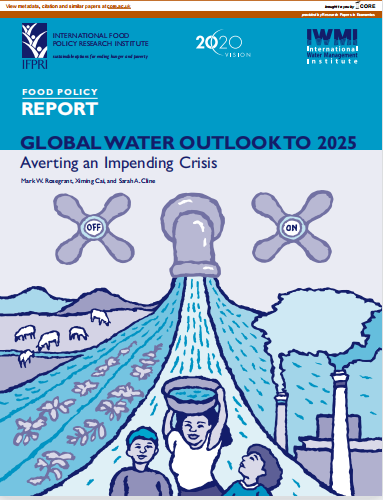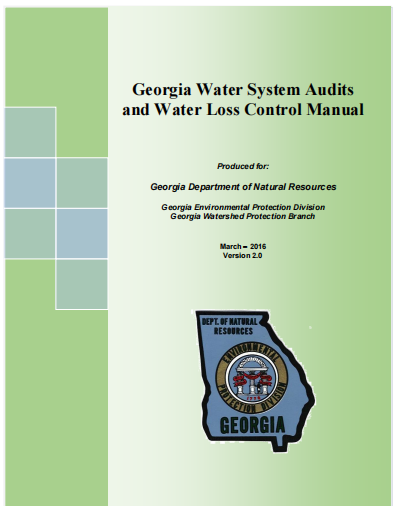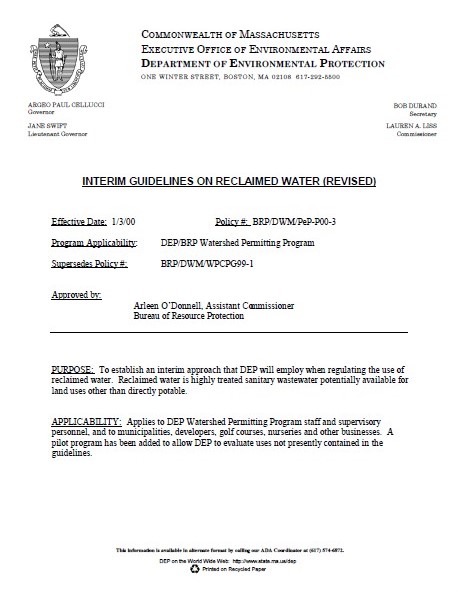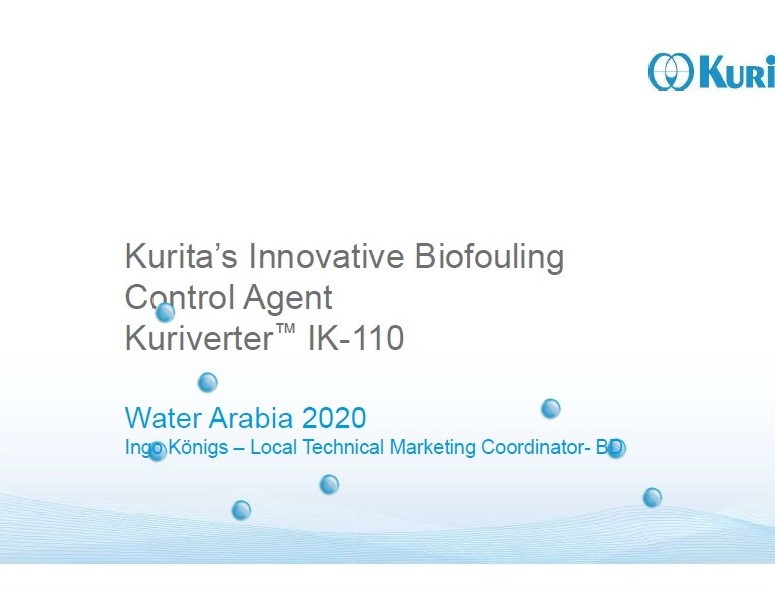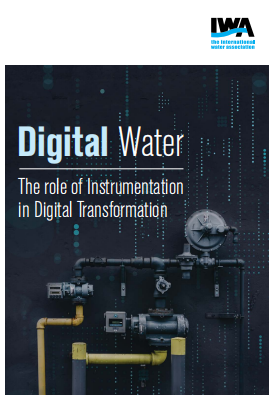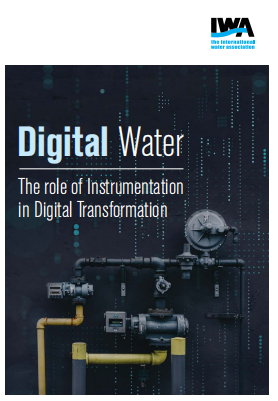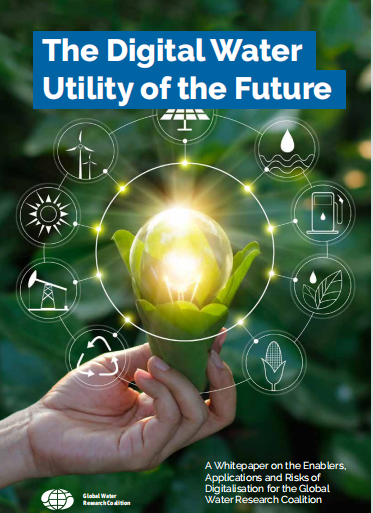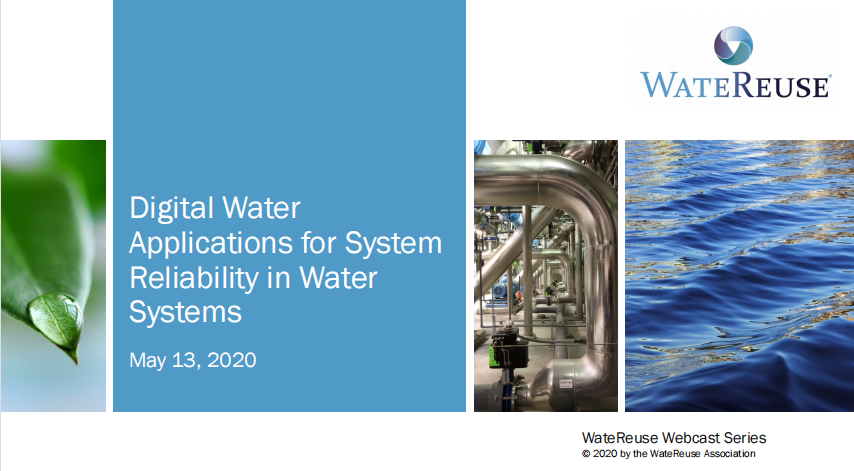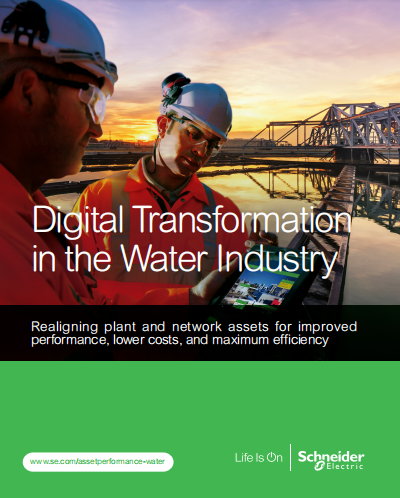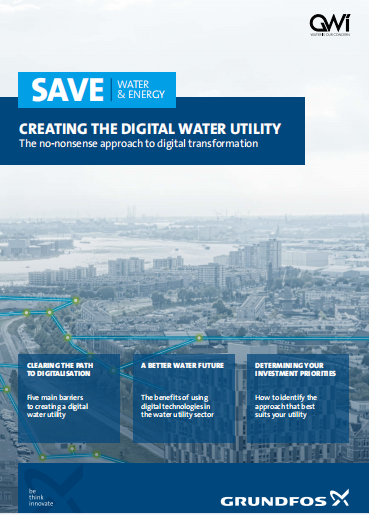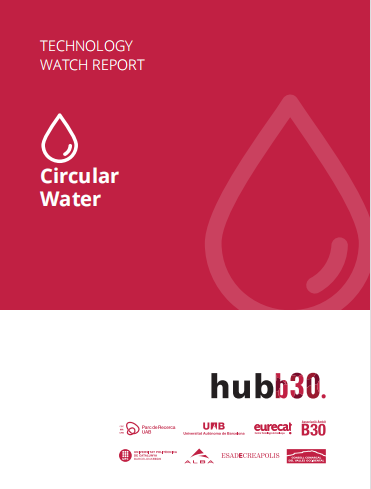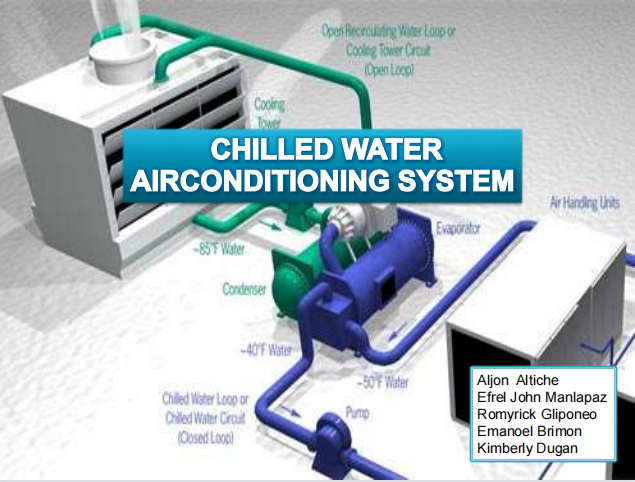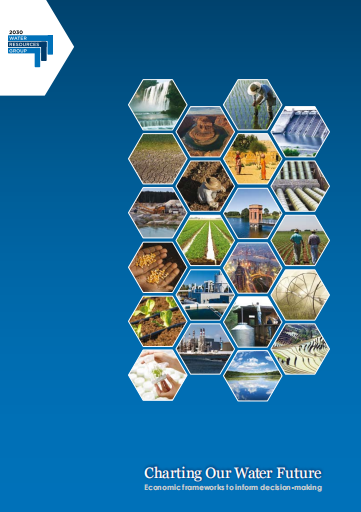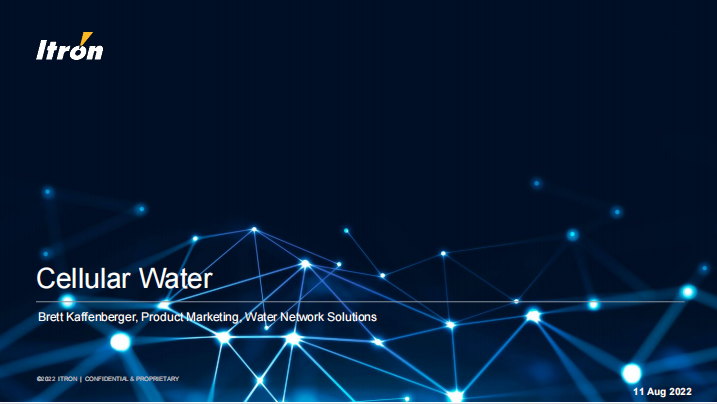Global Water Outlook To 2025
Introduction
Demand for the world’s increasingly scarce water supply is rising rapidly, challenging its availability for food production and putting global food security at risk. Agriculture, upon which a burgeoning population depends for food, is competing with industrial, household, and environmental uses for this scarce water supply. Even as demand for water by all users grows, groundwater is being depleted, other water ecosystems are becoming polluted and degraded, and developing new sources of water is getting more costly.
Global Water Outlook To 2025
Introduction
Demand for the world’s increasingly scarce water supply is rising rapidly, challenging its availability for food production and putting global food security at risk. Agriculture, upon which a burgeoning population depends for food, is competing with industrial, household, and environmental uses for this scarce water supply. Even as demand for water by all users grows, groundwater is being depleted, other water ecosystems are becoming polluted and degraded, and developing new sources of water is getting more costly.
Fire Alarm System Fundamentals
UL is one of the several companies approved to perform safety testing by the US federal agency Occupational Safety and Health Administration (OSHA)
Fire Alarm System Fundamentals
UL is one of the several companies approved to perform safety testing by the US federal agency Occupational Safety and Health Administration (OSHA)
Digitalising Water Sharing Singapore’s Experience
Preface
Water – specifically, the lack of it – occupies a special place in the Singaporean consciousness. We simply do not have the space to collect and to store enough of the rainwater that we will need for later consumption. Water scarcity compels us to turn to recycled wastewater and even dearer desalinated seawater in order to quench new thirst. Indeed, the enduring sustainability and security of Singapore’s water supply present, no less, an existential challenge for the country
Digitalising Water Sharing Singapore’s Experience
Preface
Water – specifically, the lack of it – occupies a special place in the Singaporean consciousness. We simply do not have the space to collect and to store enough of the rainwater that we will need for later consumption. Water scarcity compels us to turn to recycled wastewater and even dearer desalinated seawater in order to quench new thirst. Indeed, the enduring sustainability and security of Singapore’s water supply present, no less, an existential challenge for the country
Digital Water The Role Of Instrumentation In Digital Transformation
Introduction
This white paper focuses on the importance of instrumentation as the source of information for the Digital Transformation. The aim is to highlight the crucial role that the right instrumentation has in improving situational awareness and in facilitating informed decision making. The examples shown here were selected to demonstrate simple and more complex uses of instrumentation and how this can be used to realise immediate benefits for the water sector. The concept of the Digital Transformation, especially in the Water Industry, includes a broad category of techniques and methods that can be used to allow the industry to operate with more efficiency and to make decisions based upon an informed way of working. From the use of modelling techniques to the use of concepts such as Digital Twins, there are common factors that underpin every aspect of Digital Transformation, i.e. the use of data and the source from where that data has come from (usually, but
not exclusively, some form of instrument that is recording this data). In terms of Digital Transformation, Instrumentation can be defined
as: “A set of techniques to measure, transmit, record and regulate physical or chemical variables. Instrumentation is needed to acquire
information of a process variable, to be able to react manually or automatically (control actions) to maintain the process in a desired
operational point.” This includes instrumentation for acquiring information but also valves and controllers for process control
Digital Water The Role Of Instrumentation In Digital Transformation
Introduction
This white paper focuses on the importance of instrumentation as the source of information for the Digital Transformation. The aim is to highlight the crucial role that the right instrumentation has in improving situational awareness and in facilitating informed decision making. The examples shown here were selected to demonstrate simple and more complex uses of instrumentation and how this can be used to realise immediate benefits for the water sector. The concept of the Digital Transformation, especially in the Water Industry, includes a broad category of techniques and methods that can be used to allow the industry to operate with more efficiency and to make decisions based upon an informed way of working. From the use of modelling techniques to the use of concepts such as Digital Twins, there are common factors that underpin every aspect of Digital Transformation, i.e. the use of data and the source from where that data has come from (usually, but
not exclusively, some form of instrument that is recording this data). In terms of Digital Transformation, Instrumentation can be defined
as: “A set of techniques to measure, transmit, record and regulate physical or chemical variables. Instrumentation is needed to acquire
information of a process variable, to be able to react manually or automatically (control actions) to maintain the process in a desired
operational point.” This includes instrumentation for acquiring information but also valves and controllers for process control
The Digital Water Utility Of The Future
Introduction
Digitalisation offers a wide range of opportunities for enhancing or re-imagining existing business processes in order to reduce cost, speed up resolution, minimise human intervention, assist decision-making and improve the customer experience. It diversifies our available approaches to address emerging challenges and external developments such as climate change and manage the densification of cities. There are opportunities along the entire system including supply sources, network maintenance, network performance, customer interactions
and market-based trading. The ability to gather, analyse and interpret large quantities of disparate data combined with automation are key enablers. The ability to harness large amounts of disparate data is particularly powerful when combined with the ability to optimise system design, performance and resilience using models and optimization tools. The speed of data analytics and advances in monitoring devices bring about opportunities for optimisation not previously been recognised or achievable. The outcome is better service and value for customers
through more proactive, informed and timely decision making that is hopefully holistic and context sensitive.
The Digital Water Utility Of The Future
Introduction
Digitalisation offers a wide range of opportunities for enhancing or re-imagining existing business processes in order to reduce cost, speed up resolution, minimise human intervention, assist decision-making and improve the customer experience. It diversifies our available approaches to address emerging challenges and external developments such as climate change and manage the densification of cities. There are opportunities along the entire system including supply sources, network maintenance, network performance, customer interactions
and market-based trading. The ability to gather, analyse and interpret large quantities of disparate data combined with automation are key enablers. The ability to harness large amounts of disparate data is particularly powerful when combined with the ability to optimise system design, performance and resilience using models and optimization tools. The speed of data analytics and advances in monitoring devices bring about opportunities for optimisation not previously been recognised or achievable. The outcome is better service and value for customers
through more proactive, informed and timely decision making that is hopefully holistic and context sensitive.
Digital Transformation In The Water Industry
Introduction
As water is increasingly being recognized as a high-value commodity, aging assets present a major threat to organizations that treat and deliver it. Improving asset performance is one of the most effective strategies water and wastewater plants and networks can implement to reduce costs and protect quality. Digital transformation enables asset performance management by automating information, operations, and communications technology. Collecting operational data from connected assets such as pumps and sharing it with real-time decision support
applications in the cloud or on premises – is how digitalization improves asset performance. This document examines the role of digitalization from four perspectives: asset performance, pumping performance, workforce empowerment, and system integration.
Chapter I provides an overview of asset performance improvement and how digitalization is making decades of asset performance management advancements feasible for improving performance of water and wastewater assets. It provides a three-part program for improving both the tactical and strategic performance of water industry assets. Chapter II focuses on improving performance of pumping assets, arguably the most critical and vulnerable asset in the industry, and Chapter III addresses how digitalization can improve workforce performance, highlighting augmented reality as an example of a technology that is just beginning to take hold in the water industry.
System integrators will play a significant role in digitalization of the water industry and Chapter IV provides a glimpse of digital transformation from the perspective of a system integrator with extensive experience in serving the water and wastewater industry
Digital Transformation In The Water Industry
Introduction
As water is increasingly being recognized as a high-value commodity, aging assets present a major threat to organizations that treat and deliver it. Improving asset performance is one of the most effective strategies water and wastewater plants and networks can implement to reduce costs and protect quality. Digital transformation enables asset performance management by automating information, operations, and communications technology. Collecting operational data from connected assets such as pumps and sharing it with real-time decision support
applications in the cloud or on premises – is how digitalization improves asset performance. This document examines the role of digitalization from four perspectives: asset performance, pumping performance, workforce empowerment, and system integration.
Chapter I provides an overview of asset performance improvement and how digitalization is making decades of asset performance management advancements feasible for improving performance of water and wastewater assets. It provides a three-part program for improving both the tactical and strategic performance of water industry assets. Chapter II focuses on improving performance of pumping assets, arguably the most critical and vulnerable asset in the industry, and Chapter III addresses how digitalization can improve workforce performance, highlighting augmented reality as an example of a technology that is just beginning to take hold in the water industry.
System integrators will play a significant role in digitalization of the water industry and Chapter IV provides a glimpse of digital transformation from the perspective of a system integrator with extensive experience in serving the water and wastewater industry
Charting Our Water Future
Preface
The world is increasingly turning its attention to the issue of water scarcity. Many countries face water scarcity as a fundamental challenge to their economic and social development; by 2030 over a third of the world population will be living in river basins that will have to cope with significant water stress, including many of the countries and regions that drive global economic growth. Across the globe, policy makers, civil society and the business sector are increasingly becoming aware of the challenge facing global water resources, and the need to carefully
manage these resources. Progress has been limited, however, and overall too slow. One missing piece has been the lack of a rigorous analytical framework to facilitate decision-making and investment into the sector, particularly on measures of efficiency and water productivity. The report Charting Our Water Future was developed to take a first step in providing greater clarity on the scale, costs and tradeoffs of solutions to water scarcity. It is the result of a year-long collaboration involving IFC (a member of the World Bank Group), McKinsey & Company,
The Coca-Cola Company, Barilla, New Holland Agriculture, Nestlé, SABMiller plc, Standard Chartered Bank and Syngenta AG, and has relied on the input of over 300 specialists and public sector practitioners as well as the consistent guidance of a group of expert advisors. We hope this is a useful contribution that can advance solutions and elevate the debate for what is an issue of critical importance to all.
Charting Our Water Future
Preface
The world is increasingly turning its attention to the issue of water scarcity. Many countries face water scarcity as a fundamental challenge to their economic and social development; by 2030 over a third of the world population will be living in river basins that will have to cope with significant water stress, including many of the countries and regions that drive global economic growth. Across the globe, policy makers, civil society and the business sector are increasingly becoming aware of the challenge facing global water resources, and the need to carefully
manage these resources. Progress has been limited, however, and overall too slow. One missing piece has been the lack of a rigorous analytical framework to facilitate decision-making and investment into the sector, particularly on measures of efficiency and water productivity. The report Charting Our Water Future was developed to take a first step in providing greater clarity on the scale, costs and tradeoffs of solutions to water scarcity. It is the result of a year-long collaboration involving IFC (a member of the World Bank Group), McKinsey & Company,
The Coca-Cola Company, Barilla, New Holland Agriculture, Nestlé, SABMiller plc, Standard Chartered Bank and Syngenta AG, and has relied on the input of over 300 specialists and public sector practitioners as well as the consistent guidance of a group of expert advisors. We hope this is a useful contribution that can advance solutions and elevate the debate for what is an issue of critical importance to all.
Cellular Water
Introduction
With over 20 years experience in the water gas utility markets, Brett has worked extensively with many of the major water solutions providers in the industry. Responsible for defining solutions specifically targeting the water utility market, Brett has become an authority in water AMI and metering solutions. At Itron Brett is responsible for Global Water Networks line of business. Brett is also on the AWWA committee for
metering.
Cellular Water
Introduction
With over 20 years experience in the water gas utility markets, Brett has worked extensively with many of the major water solutions providers in the industry. Responsible for defining solutions specifically targeting the water utility market, Brett has become an authority in water AMI and metering solutions. At Itron Brett is responsible for Global Water Networks line of business. Brett is also on the AWWA committee for
metering.


